Location Based Marketing: 6 Key Metrics You Need to Measure and Boost
Location based marketing (LBM) is a strategy that uses a user's location data to deliver personalized and relevant messages, offers, or experiences. Location-based marketing can help businesses increase customer engagement, loyalty, and sales by providing value at the right time and place.
But how do you measure the effectiveness of your location-based marketing campaigns? What are the key metrics that you should track and optimize? Here are some of the most important ones.
The ultimate guide to increasing your Reach
Reach is a key metric in location based marketing, as it measures how many potential customers are exposed to your ads or messages based on their geographic proximity to your business.
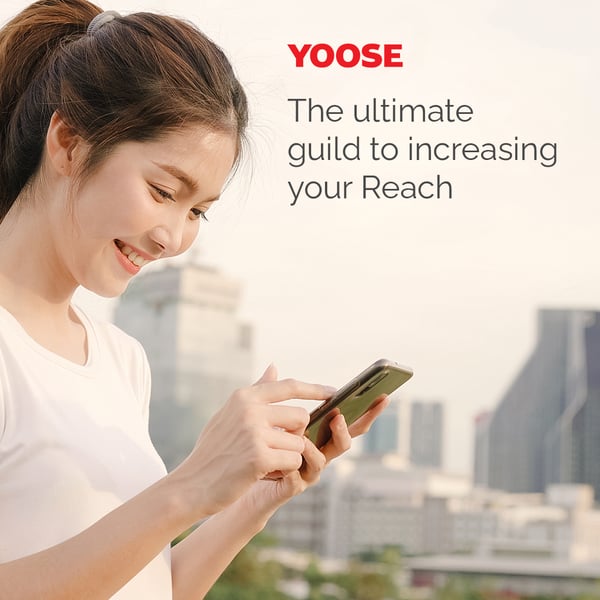
Reach helps you connect with users who are most likely to be interested in your offerings and who are ready to take action. By optimizing reach, you can increase your competitive advantage, customer loyalty, and profitability.
- Optimizing reach can help you increase brand awareness, generate more leads, and drive more sales. Some possible strategies to optimize reach in location-based marketing are geo-fencing and geo-targeting, which send relevant and personalized ads or messages to users who are near your location or interested in your offers.
- Another strategy is geo-conquesting, which lures users away from your competitors’ locations and persuades them to choose your business.
- Location extensions and local inventory ads are also helpful, as they display your business information and product availability to users who are looking for local businesses.
- Location-based keywords and hashtags can boost your organic search and social media visibility and attract users who are searching for local topics or niches.
- Location-based analytics and insights can help you track and optimize your reach performance, such as impressions, clicks, conversions, and return on ad spend.
Boost your Engagement with Location Based Marketing
This metric tells you how many users interact with your LBM campaigns. Engagement in location based marketing is a key factor for success in today's competitive business environment. However, engagement is not only about sending messages, but also about creating value for customers and building trust and rapport.
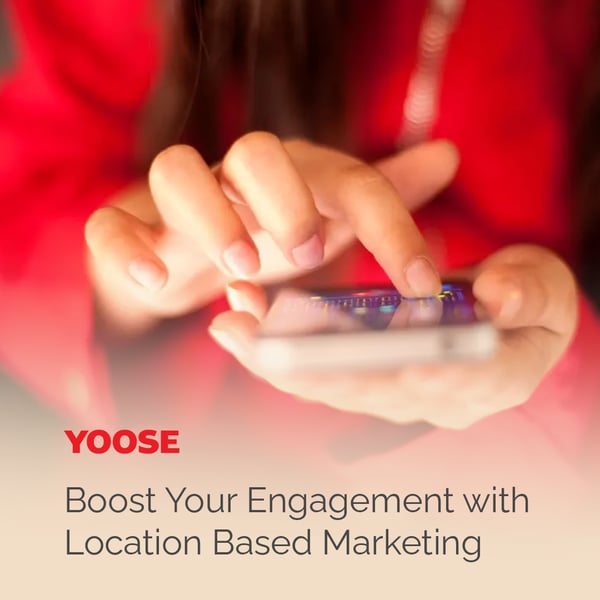
Engagement is important because it can create a win-win situation for both businesses and customers. By engaging customers, businesses can increase their satisfaction and retention, enhance their brand awareness and reputation, improve their loyalty and advocacy, and achieve higher return on investment and profitability. Customers, in turn, can enjoy more value and benefits from the products or services they purchase, and feel more connected and appreciated by the businesses they interact with.
To optimize engagement in location based marketing, businesses should follow some best practices, such as:
- Segmenting customers based on their location, preferences, behavior and other criteria.
- Creating compelling and customized offers that match the customer's needs and interests.
- Providing useful and timely information that can help customers make decisions or solve problems.
- Asking for feedback and reviews from customers and rewarding them for their participation.
- Measuring and analyzing the results of location based marketing campaigns and adjusting them accordingly.
The secret to boosting your Conversions
This metric shows how many times your audience completed a desired action after clicking on your location-based ads or messages. It could be a purchase, a sign-up, a download, a visit to your store, etc. It indicates the effectiveness and profitability of your campaigns.
Conversions also mean getting people to take an action that brings them closer to becoming loyal customers, such as signing up for a newsletter, downloading an app, or leaving a review. These actions can help build trust and engagement with a brand, which can lead to repeat purchases and referrals.
Therefore, conversion is important for location-based marketing because it measures the effectiveness of the strategy and the return on investment. It also helps businesses understand their customers better and optimize their campaigns accordingly. By tracking and analyzing conversion rates, businesses can identify what works and what doesn't, and adjust their messages, offers, and channels to suit their target audience's preferences and needs.
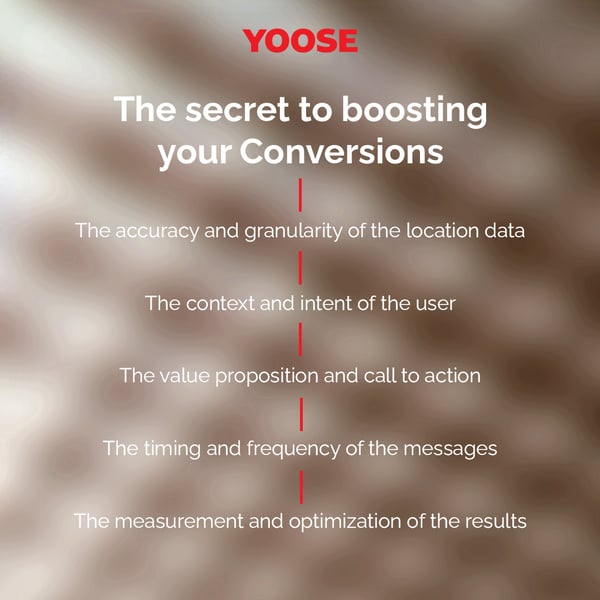
To optimize conversion for location-based marketing campaigns, marketers should consider the following factors:
- The accuracy and granularity of the location data. The more precise and reliable the location data is, the more relevant and tailored the messages can be.
- The context and intent of the user. The messages should match the user's current situation and needs, such as their mood, preferences, behavior, or goals.
- The value proposition and call to action. The messages should clearly communicate the benefits and incentives of engaging with the brand, and provide a clear and easy way for the user to take action.
- The timing and frequency of the messages. The messages should be delivered at the right moment and with the right frequency to capture the user's attention and interest, without being intrusive or annoying.
- The measurement and optimization of the results. The marketers should track and analyze the performance of their location-based marketing campaigns, such as click-through rates, conversion rates, revenue, or customer satisfaction, and use the insights to improve their strategies and tactics.
Increase your Impressions with Geofencing and Personalization
Impressions in location based marketing are the number of times a user sees an advertisement or a message that is relevant to their location. For example, if a user is near a coffee shop, they might see an ad for a discount on their next purchase.
Impressions in location based marketing are important because they help you reach your target audience at the right place and time, and influence their purchase decisions. By optimizing your impressions, you can turn online conversions into offline conversions, then make the most of your marketing budget and achieve your business goals.
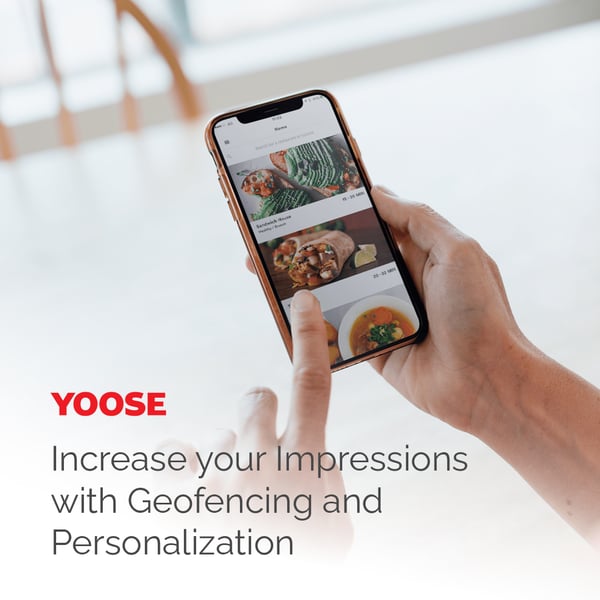
To optimize impressions in location based marketing, use geofencing and personalization.
- Geofencing creates a virtual boundary around a location and sends customized messages to users who enter or exit it.
- Personalization tailors the content and design of an ad or a message to each user’s preferences and behavior. Both techniques help marketers target users who are interested in their offers, and deliver relevant and timely messages that influence their purchases.
Improve your Click-Through Rate for Location-Based Marketing
Click-through rate (CTR) is a metric that measures how often people who see your online advertisement or email link end up clicking on it. It is calculated by dividing the number of clicks by the number of impressions (or views) and multiplying by 100 to get a percentage. For example, if your ad is shown 1000 times and gets 20 clicks, your CTR is 2%.
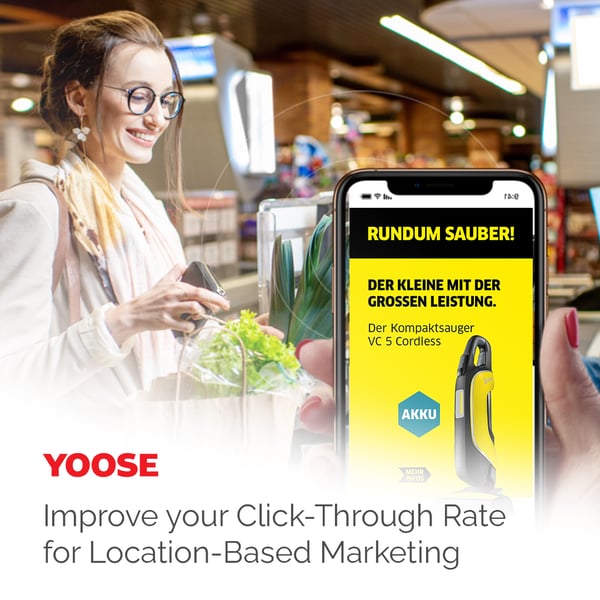
In location-based marketing, CTR indicates how successful your online marketing campaign is in attracting and engaging your target audience. A high CTR means that your ad or link is relevant, appealing, and effective in generating interest. A low CTR means that you may need to improve your ad copy, design, placement, or keywords to reach more potential customers.
One way to optimize your CTR is to use clear and compelling headlines, descriptions, and calls to action that match the intent and expectations of your audience. You should also test different versions of your ad or link to see which one performs better and use analytics tools to track and measure your results. By optimizing your CTR, you can increase your website traffic, conversions, and revenue.
The key to optimize your Footfalls
Footfalls are the number of people who visit a physical location, such as a store, a mall, or a restaurant. Footfalls are important for location-based marketing because they indicate how effective a business is at attracting and retaining customers in a specific area. By measuring and analyzing footfalls, businesses can optimize their marketing strategies to increase sales, loyalty, and customer satisfaction.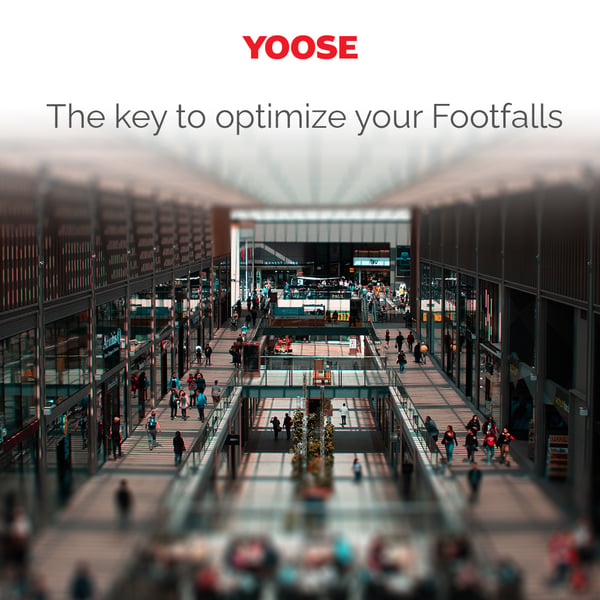
To optimize footfalls, businesses need to understand their target audience, their competitors, and their location. Some of the ways to optimize footfalls are:
- Creating a unique and appealing value proposition that differentiates the business from others in the same area.
- Offering incentives and rewards for repeat visits, referrals, and feedback.
- Leveraging online channels such as social media, email, and mobile apps to drive awareness and engagement.
- Providing a seamless and convenient customer experience across all touchpoints, from online to offline.
- Using location-based technologies such as geofencing, beacons, and QR codes to deliver personalized and relevant messages and offers to customers near or inside the location.
- Testing and experimenting with different marketing campaigns and measuring their impact on footfalls and sales.
These are some of the key metrics for location based marketing that can help you evaluate and improve your LBM strategy. By tracking and optimizing these metrics, you can create more effective and profitable LBM campaigns that deliver value to your customers and your business.
Want to know more about Location-based Marketing?
Don’t miss this opportunity to boost your Location-based Marketing strategy with our free guide. At YOOSE, you’ll discover how to track and optimize the key metrics that matter for your business and your customers here.
Contact us now and get ready to grow.


